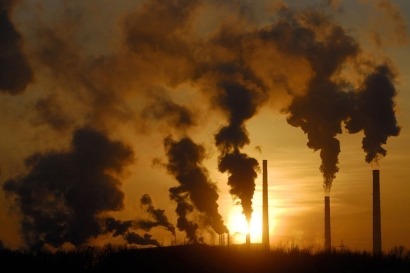
The Bridging the Emissions Gap report, issued just days ahead of the UN climate convention negotiations in South Africa and seven months before the Rio+20 summit in Brazil, provides the clearest indicators yet that the world already has the solutions to avert damaging climate change.
It presents policymakers with clear ideas on how to bridge the emissions gap by 2020 which, as a result of improved modelling from last year's assessment, is now estimated, under the most optimistic scenarios, to be 6 GtCO2e rather than 5 Gt of GtCO2e.
The report also outlines far more pessimistic scenarios, if the commitments and pledges of developed countries, including levels of financing amounting to $100 billion a year by 2020, and the intentions of developing ones are not fully realized-the gap then, by 2020, could be 11 GtCO2e. Under business-as-usual conditions, it could even be 12 GtCO2e.
"The annual UNEP Gap Report is a vital contribution to the global effort to address dangerous climate change," said United Nations Secretary General Ban Ki-moon. "It shows that we have much to do, both in terms of ambition and policy, but it also shows that the gap can still be closed if we act now. This is a message of hope and an important call to action."
Bridging the gap "feasible"
UNEP’s comprehensive study concludes that brining emissions down to safer levels is “technologically and economically feasible, with an accelerated uptake of renewable energy, fuel switching and energy efficiency improvements delivering a large slice of the necessary cuts.
Other measures include sectoral improvements ranging from increased penetration of public transport and more fuel efficient vehicles to ones in areas, such as, agriculture and waste management.
The report cites aviation and shipping as a special but important case, as currently these 'international emissions' fall outside the Kyoto Protocol-the emission reduction treaty.
Together they account for around five per cent of C02 emissions and could account for up to 2.5 Gigatonnes (Gt) of carbon dioxide equivalent (GtCO2e) annually, by 2020.
"Options for reducing emissions from both sectors include improving fuel efficiency and using low-carbon fuels. For the shipping sector, another promising and simple option is to reduce ship speeds," says the report which has involved 55 scientists and experts from 28 scientific groups across 15 countries.
"This report puts into the hands of governments and policymakers vital information about their options if the world is to meet the climate change challenge," said Achim Steiner, Executive Director of UNEP and Under-Secretary General of the UN. "This year, countries will be able to begin their deliberations in Durban, South Africa, with all the key technological and economic scenarios at their fingertips that outline the gap between current ambition and scientific reality alongside the urgent bridges that can be built to span this emissions' divide."
Bridging the Emissions Gap is the second in UNEP's series of reports on the topic. The first - the Emissions Gap Report - became a clear benchmark at last year's international climate negotiations in Cancun, Mexico. There, policymakers asked UNEP to prepare a follow-up report that, not only updated emissions gap estimates, but which also provided ideas on how to bridge the gap. That follow-up is the new report, Bridging the Emissions Gap.
Christiana Figueres, Executive Secretary of the United Nations Framework Convention on Climate Change, emphasized the need for increased action. "This study, again, reminds us that efforts to address climate change are currently still insufficient," she said. "But it also shows that it is possible for governments to bridge the gap between what they have promised and what needs to be done to stay below a 2-degrees Celsius average global temperature rise."
"Time is short, so we need to optimize the tools at hand. In Durban, governments need to resolve the immediate future of the Kyoto Protocol, define the longer path towards a global, binding climate agreement, launch the agreed institutional network to support developing countries in their response to the climate challenge, and set out a path to deliver the long-term funding that will pay for that," she added.
Changes to energy system key
Bridging the Emissions Gap highlights the need for realistic changes in the energy system, by improving energy efficiency and by accelerating the introduction of renewable energies.
Specifically, the study reviewed 13 scenarios from nine different scientific groups. The scenarios were all able to reduce greenhouse gas emissions to meet the 2-degree target by 2020 by using a combination of the following:
The report's authors note that all the scenarios examined had different mixes of these options, indicating that there are many different pathways to bridging the gap.
Importantly for policymakers, the report also looks at what these options would cost. Globally, the average marginal costs range from $US25-$US54 per tonne of equivalent carbon dioxide removed, with a median value of $US34 per tonne.
Sector by sector
The study also examined research on various economic sectors to consider technical potential for emissions reductions by 2020. It found the following potential:
The total emission reduction potential adds up to about 17 GtCO2e, plus/minus 3 GtCO2e, with marginal costs of up to $US50-100 per tonne of GtCO2e. This is consistent with the cost estimates from the scenarios mentioned above.
This emissions reduction potential is larger than the estimated emissions gap of 12 GtCO2e under business-as-usual conditions, and as such provides policymakers with clear insights into promising options for the way forward to stay below the 2-degree C target.
The report concludes that policymakers could narrow or close the emissions gap in 2020 by:
For additional information:

